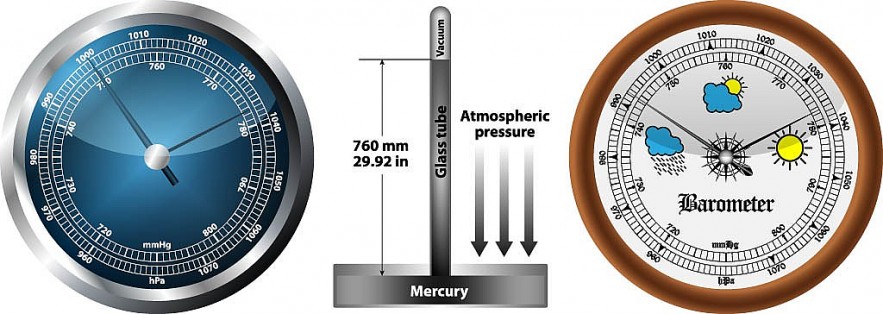What Is The Weight Of Air
 |
| The Weight Of Air |
What is air?
It is transparent, tasteless, and colorless and is made up of a variety of gases, such as nitrogen (78%), oxygen (21%), argon, carbon dioxide, and minor amounts of other gases and aerosols. Air is this substance.
The Earth's atmosphere, which is about 300 miles thick and weighs 5 quadrillion tons, is referred to as "air." Anything with mass has weight, and air has both. The weight of 1 cubic foot of air is estimated to be 0.0807 pounds, making it a light substance.
Never undervalue the importance of this element we call air. Although it may not be visible to the naked eye, its source is what gives much of what we value most in life strength. These are the explanations for why we can never ignore air, whether we are aware of it or not.
Air Mass
An air mass is a sizable region of air that has absorbed the properties of the land or water below it, including its characteristics, temperature, and moisture content.
Hundreds to thousands of miles long air masses exist. The air mass's temperature, humidity, and other properties are all uniformly distributed.
Continental and Maritime are the two major subcategories of air masses. Maritime air masses originate over oceans, while continental air masses originate over continents. The temperature content of the surface over which they originate is used to further divide each of the two divisions. The air masses that make up those divisions will either be tropical, arctic, or polar.
Since they originate over the Arctic or Antarctic regions, Arctic air masses are the coldest of all air masses. Polar air masses originate over higher land and sea latitudes, so they are not as cold as Arctic air masses.
Because they originate over lower latitudes of both land and sea, tropical air masses are warm or hot.
Layers of The Atmosphere
The area of air that surrounds the Earth is called the atmosphere. The atmosphere of Earth extends over a vertical distance of about 6200 miles from its ocean, land, and ice-covered surface into space.
Five layers make up the atmosphere:
Troposphere
Stratosphere
Mesosphere
Thermosphere
Exosphere
Every layer of the Earth’s atmosphere plays a crucial role in supporting life on it.
Air Pressur
Although it appears to be light, there is a lot of air pressing down on the surface of the Earth. We experience this as air pressure, which is caused by a downward force of 14.7 pounds per square inch.
On the summit of a mountain, there is less atmosphere pressing down on us, so the air pressure is low. When we drive up high elevations into the mountains or take off in an airplane, the difference in air pressure is what causes our ears to pop.
Video: What is the weight of Air?
How much the atmosphere weighs?
Even though it doesn't seem like it, air has weight. We know that anything with mass has weight because, for instance, we can feel the weight of the air when the wind blows.
The total weight of the atmosphere exerts a pressure of about 14.7 pounds per square inch at sea level.
We know that the air at sea level weighs 14.7 psi, or pounds per square inch, which means that each square inch of you is under the weight of about 15 pounds.
In other words, that's like having a car's weight constantly bear down on you!
Therefore, we must first determine how many square inches make up the atmosphere, which is approximately 793 quadrillion square inches, in order to determine how much the atmosphere weighs.
Over 11 quintillion pounds (or 11,700,000,000,000,000 pounds) are equal to the average pressure "pressing" down or exerted on you (14.7 pounds per square inch) times the square inches that make up the atmosphere (793 quadrillion).
The next thing you might be wondering is why we don't collapse under the weight of everything.
That's because the weight is dispersed uniformly across the surface of the Earth and your body. Because we also breathe in the atmosphere, the pressure exerted outward balances the pressure applied inward (from above and beside).
But since you're used to it, you don't even notice the weight. 85% of the atmosphere is above you if you live in Denver, Colorado, which is at an elevation of about 5,000 feet, resulting in an air pressure of about 12.5 pounds per square inch. Only 30% of the atmosphere is present above you at the summit of Mount Everest (more than 29,000 feet), giving you an air pressure of only 4.4 pounds per square inch.
Some people believe that because a piece of air (like the air in a thin, light balloon) appears to "float" around, air does not have weight. This is due to the air parcel being surrounded by air that has the same density as it in terms of mass per volume.
However, if we were to remove that particular air parcel from the atmosphere, the atmosphere's weight would slightly decrease. We would notice a very slight decrease in the weight of the atmosphere (the barometric pressure) if we could precisely measure the barometric pressure everywhere on the surface of the Earth. The global-average barometric pressure at the Earth's surface would decrease by 50% if we could remove 50% of the atmosphere's mass.
How is it measured?Henry Cavendish, a British physicist, made the first precise calculation of Earth's mass in 1798. His meticulously planned experiment determined the density of Earth and, consequently, the value of G, the gravitational constant that Isaac Newton first proposed in 1687. Cavendish's "weighing the world" experiment came up with a result of roughly 6 sextillion tons, despite the fact that mass and weight are not equivalent (weight is variable, whereas mass is constant). It is calculated as the weight of the atmosphere in a specific location. or the weight applied to a small area, like a centimeter. Italian mathematician Evangelista Torricelli created a device to gauge atmospheric pressure in 1643. It's known as the barometer.
An empty tube from which air has been removed serves as the barometer. This tube is placed upside down in a mercury dish. Some of the mercury in the mercury dish is forced into the tube because it is under the pressure of the air above it. Inches are used to measure the height to which mercury rises, which reveals the atmospheric pressure. On a clear day, the mercury in a barometer rises to a height of 29.792 inches (76 centimeters) at sea level (clouds and strong winds can change atmospheric pressure). In terms of weight per square inch, this equates to 14.70 pounds (6.6 kilograms). We therefore have 6.6 kilograms of weight on every square inch of our bodies at sea level. |
Does Air Have Weight or Mass?
People hadn't even known that air was a substance until a few thousand years ago, much less that it did. In the history of humanity, we have only recently learned anything about the air. The average weight is 0.0807 pounds.
By definition, matter is anything that occupies space, is subject to gravity, and has mass. Create a vessel that won't topple over if you don't put air in it. Weigh the container when it is completely filled with air, then weigh it again after removing all of the air. The answer lies in the weight disparity.
The air has mass, as was briefly mentioned above, and anything that has mass would have some weight.
A Magdeburg-born naturalist named Otto von Guericke proved that air has mass. He said, "Air has mass; it would fly away if it had no weight."
You can conduct a simple experiment to demonstrate the mass and weight of air. Rupture one of the balloons while placing the other two on a grocery scale. As the balloon fills with air and falls, observe the punctured balloon rising. This occurs as a result of the balloon's weight, which demonstrates that it has both mass and weight.
Air masses can be hundreds of miles to thousands of miles long. The humidity, average temperature, and other characteristics of the air mass are constant.
A large area of air that has absorbed the topography, climate, and moisture content of the ground or water below it is called an air mass.
The two main underlying categories of air masses are continental and maritime. While continental air masses begin over the land, maritime air masses begin over the sea. The temperature of the surface across which they arise is then divided into each of the two divisions. The air masses will then be divided into three groups: Arctic, Polar, and Tropical.
The air masses are the coldest of the air masses because they come from the Arctic or Antarctic. Polar air masses are therefore less arctic in temperature than Arctic air masses because they originate at higher land and sea latitudes.
Because they originate over lower land and ocean latitudes, tropical air masses are warmer.
| A millionth of Earth's mass, or about 5.5 quadrillion tons, is made up of the atmosphere. The atmosphere of Earth is made up of microscopic suspended particles of dust, soot, smoke, and chemicals. It extends from the planet's ocean, land, and ice-covered surface outward into space, with its density being highest close to the surface. At sea level, the air molecules are compressed by the weight of the air above and sit close together, making the air heavier (and therefore easier to breathe). However, as elevation rises, the air's molecular structure opens up and becomes lighter. |
How Much Does Compressed Air Weigh?
We often think of air as being light and weightless. In reality, air is a gas with mass and space-occupying properties. Because there is a lot of "empty" space between air molecules, you may be able to compress air to fit into a smaller volume. In addition to having mass, air also applies pressure.
Therefore, one cubic foot of air weighs 0.0807 pounds at 14.7 pressure. When compressed to 1000 psi, a cubic foot of air weighs just over 5 pounds.
What Does the Air in a Room Weigh?
The size and dimensions of the room will determine the answer to this question. Therefore, to determine the weight of air, its mass must first be calculated and divided by the air's density by the room's volume (measurements). After doing this, we can multiply the mass by the acceleration, which is typically taken to be 9.8.
Thus, we can mathematically determine the weight of the air in a room using this formula. Since we have evolved alongside it, we are not aware of the immense weight. And our internal pressure is equal to the pressure from outside.
The weight of the entire atmosphere is approximately 14.7 pounds per square inch at sea level. We are so used to the weight that we don't even notice it, but as we ascend to this altitude of between 4,000 and 5,000 feet, the air pressure per square inch drops by almost two pounds.
What's the Weight of a Cubic Foot of Air?
Meanwhile, this has been precisely estimated by scientists: Per cubic meter, air weighs a little bit more than 1 kilogram.
The Earth's atmosphere weighs almost 5 quadrillion tonnes, despite the fact that it may appear that there is no pressure (literally) exerted on our bodies. This is what we mean by the word "air." Air weighs about 0.0807 pounds per cubic foot, making it a light substance.
What Is the Weight of Air Per Square Inch?
Perhaps because we can't see it or smell it unless it's an odor, we take air for granted. The atmosphere of Earth covers every inch of our planet, extending from its ice-covered surface into outer space. Nitrogen, oxygen, argon, carbon dioxide, and traces of other gases and aerosols are among the many gases that make up air, which is transparent, odorless, and colorless. Air is the substance in question.
A large area of air that has absorbed the topography, climate, and moisture content of the ground or water below it is called an air mass.
On the surface of the Earth, there is a lot of pushing even though the air appears to be light. When a force of 14.7 pounds per square inch presses against us, we experience this as air pressure.
For those who are atop the mountain, the air pressure drops. This is the reason why whenever we fly, our ears pop.
 15 Incredible Facts About A Woman Body 15 Incredible Facts About A Woman Body Women bodies are amazing with lots of different and powerful features. Read on to discover how amazing the female body is. |
 20 Amazing Facts About Blood in Your Body 20 Amazing Facts About Blood in Your Body Blood plays a crucial role in supplying our organism with oxygen and nutrients every single seconds. However, blood is much more than just a red ... |
 7 Amazing Facts About Uranus 7 Amazing Facts About Uranus Uranus, the seventh planet from the Sun, is the biggest of the ice giants and the third-largest planet in the Solar System. |
 20 Amazing Facts About Solar System 20 Amazing Facts About Solar System About 4.6 billion years ago, a giant cloud of dust and gas are known as the solar nebula collapsed in on itself and began to ... |
























